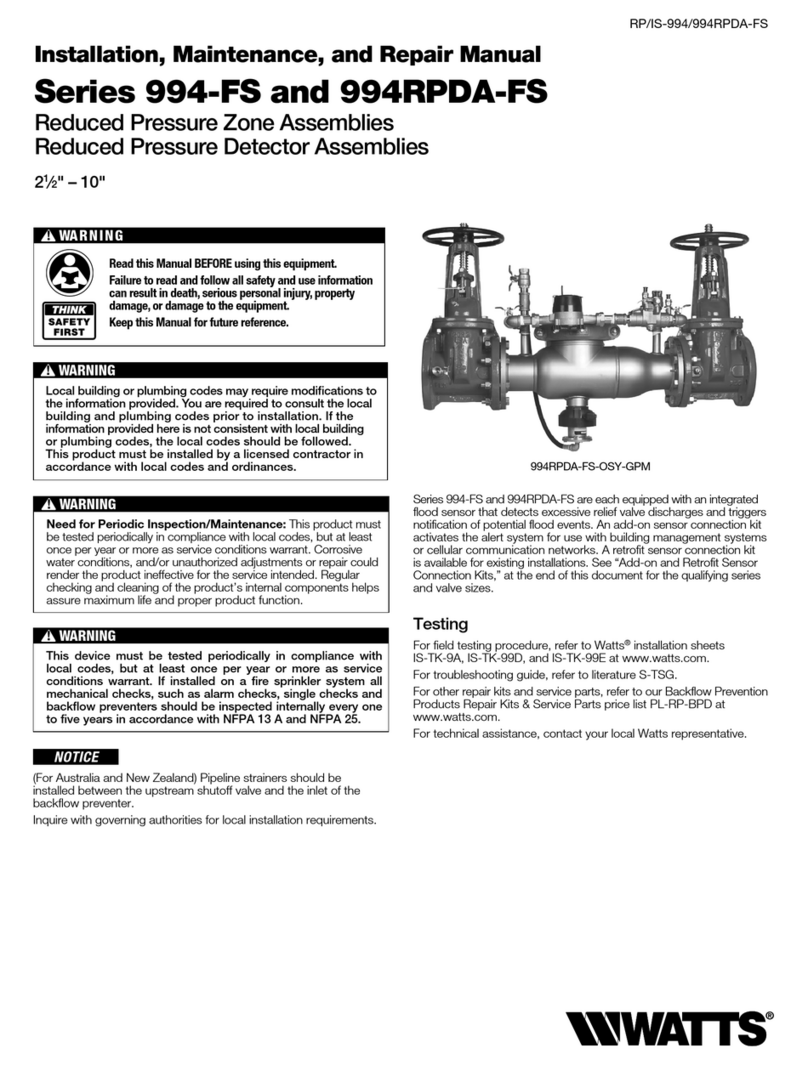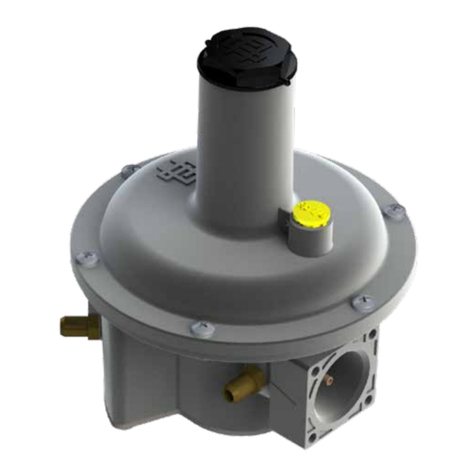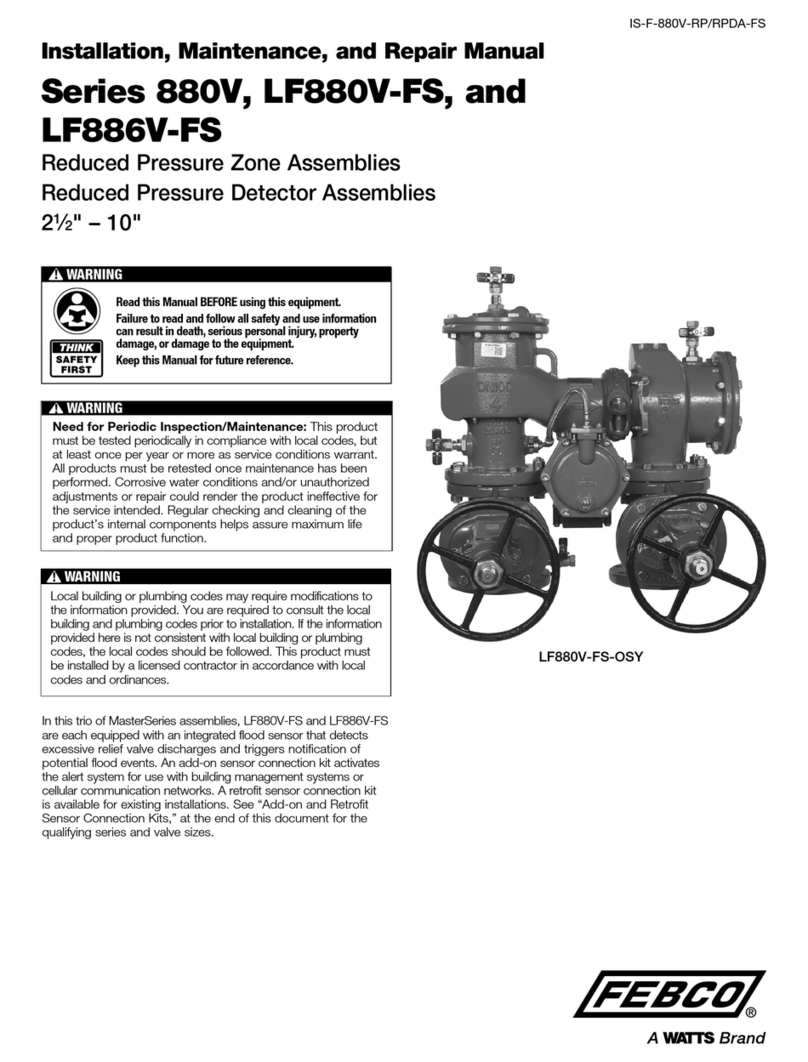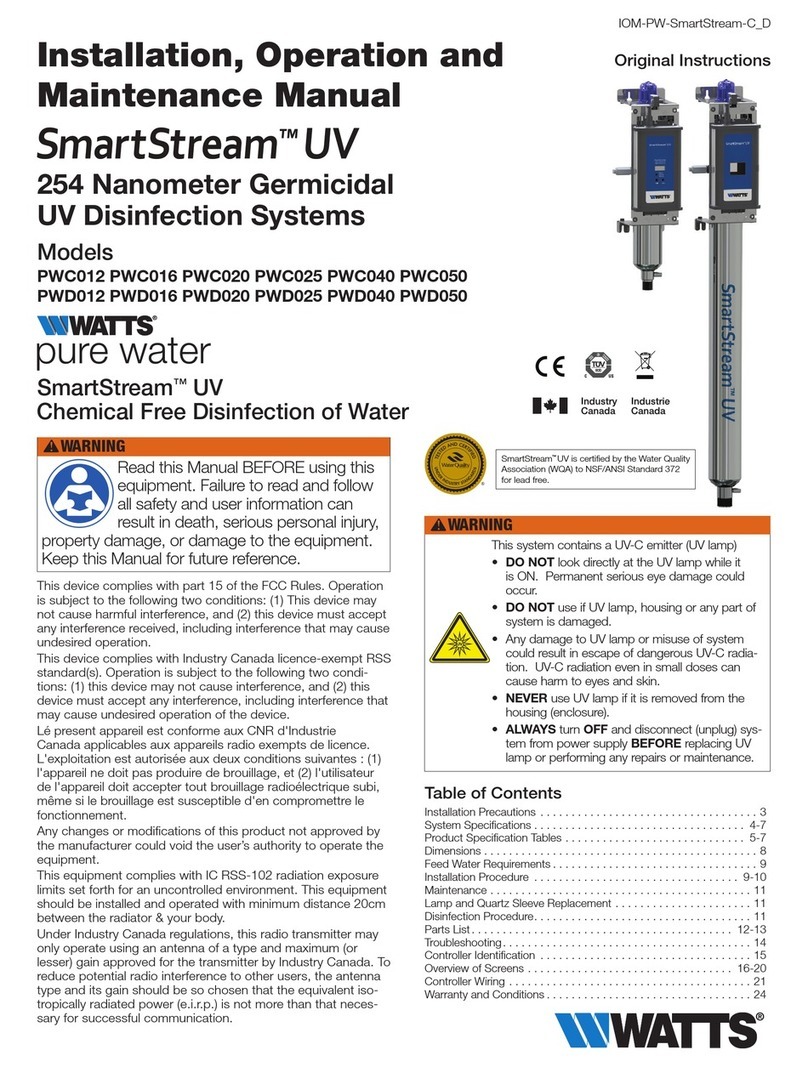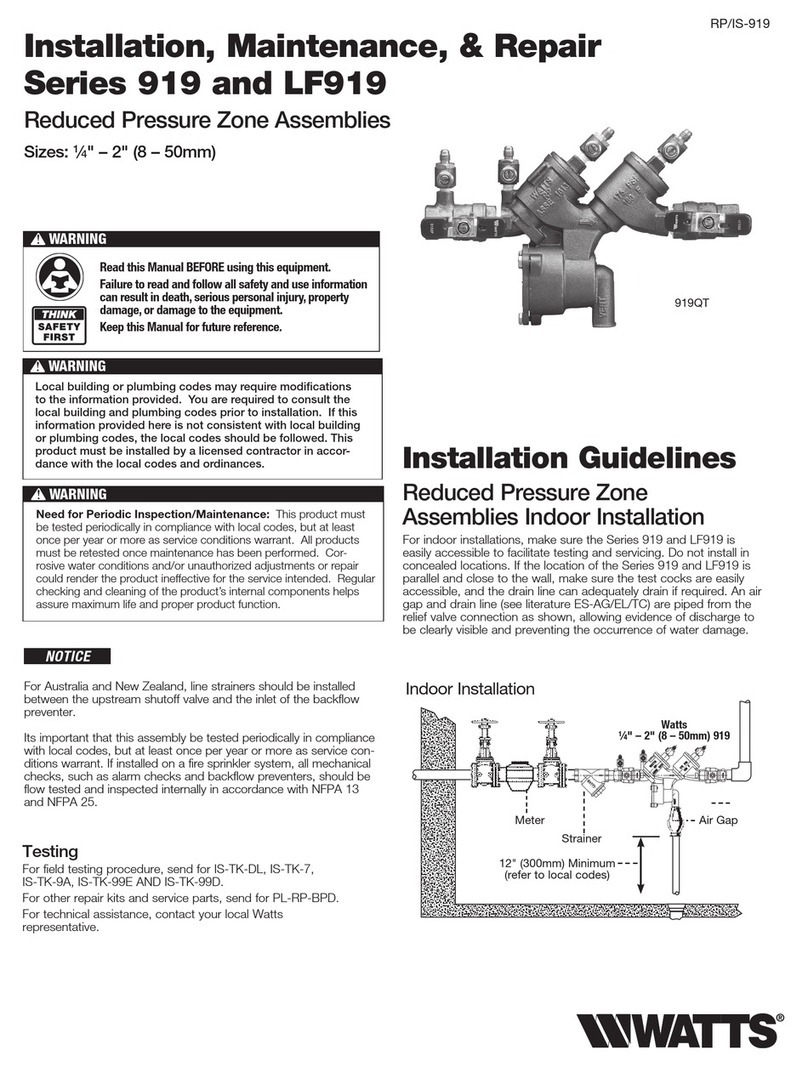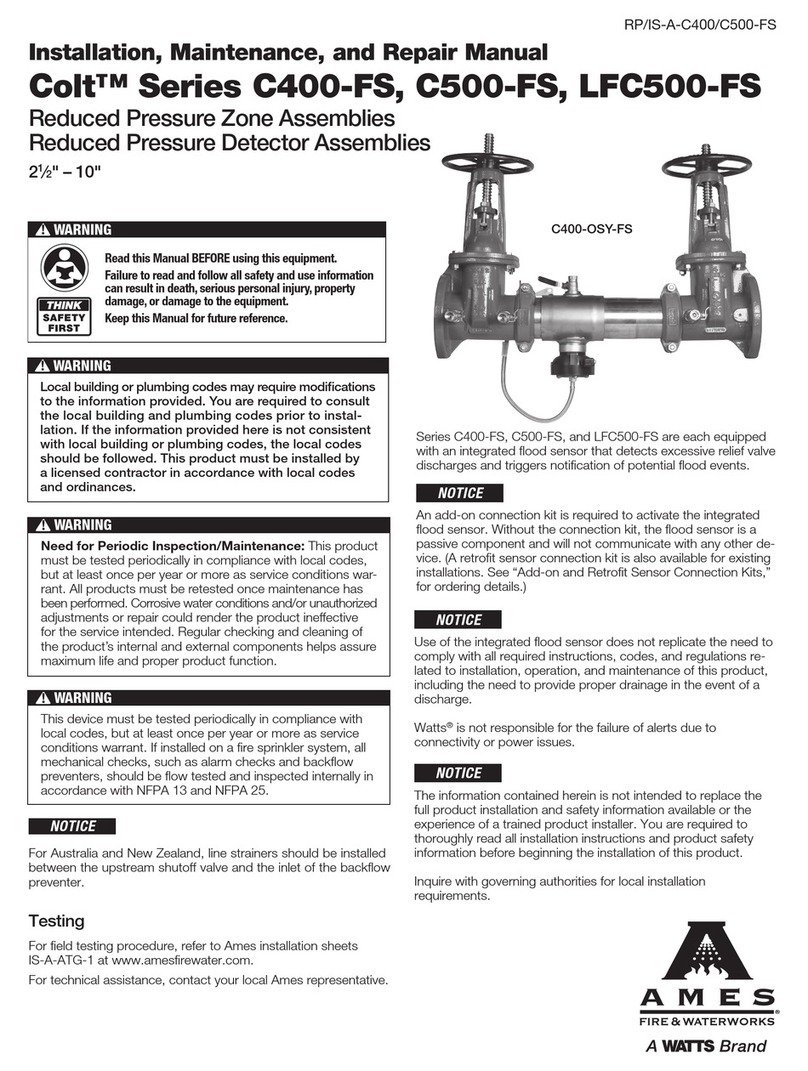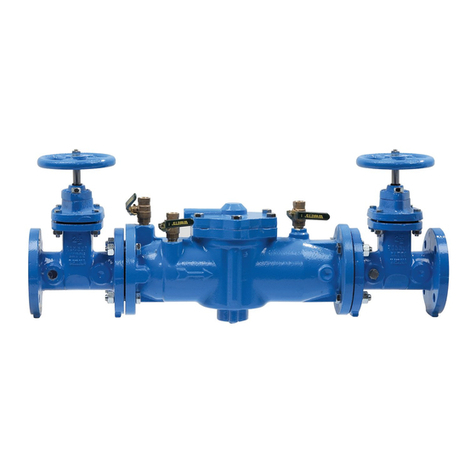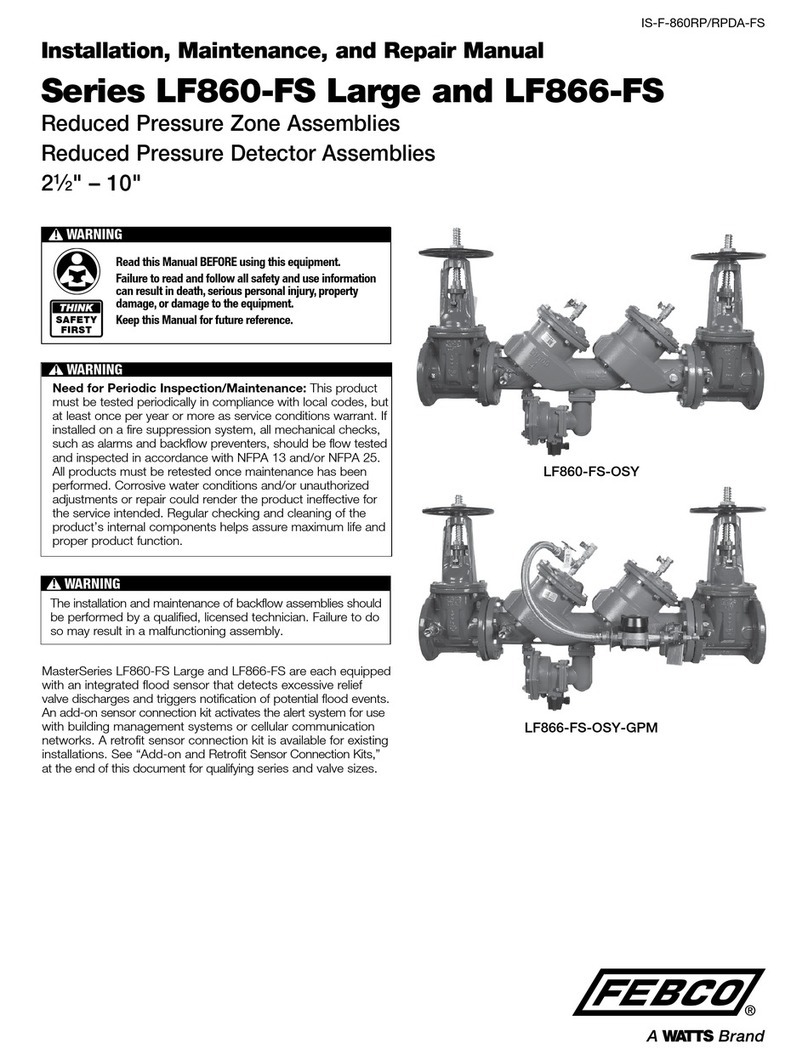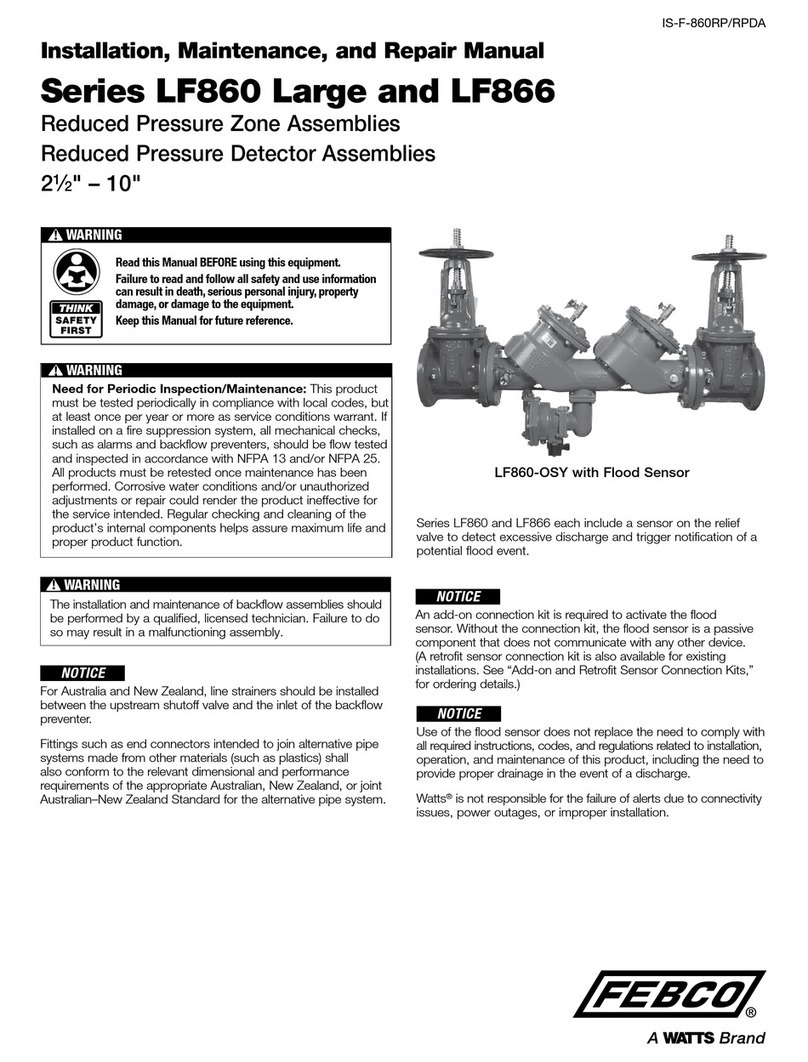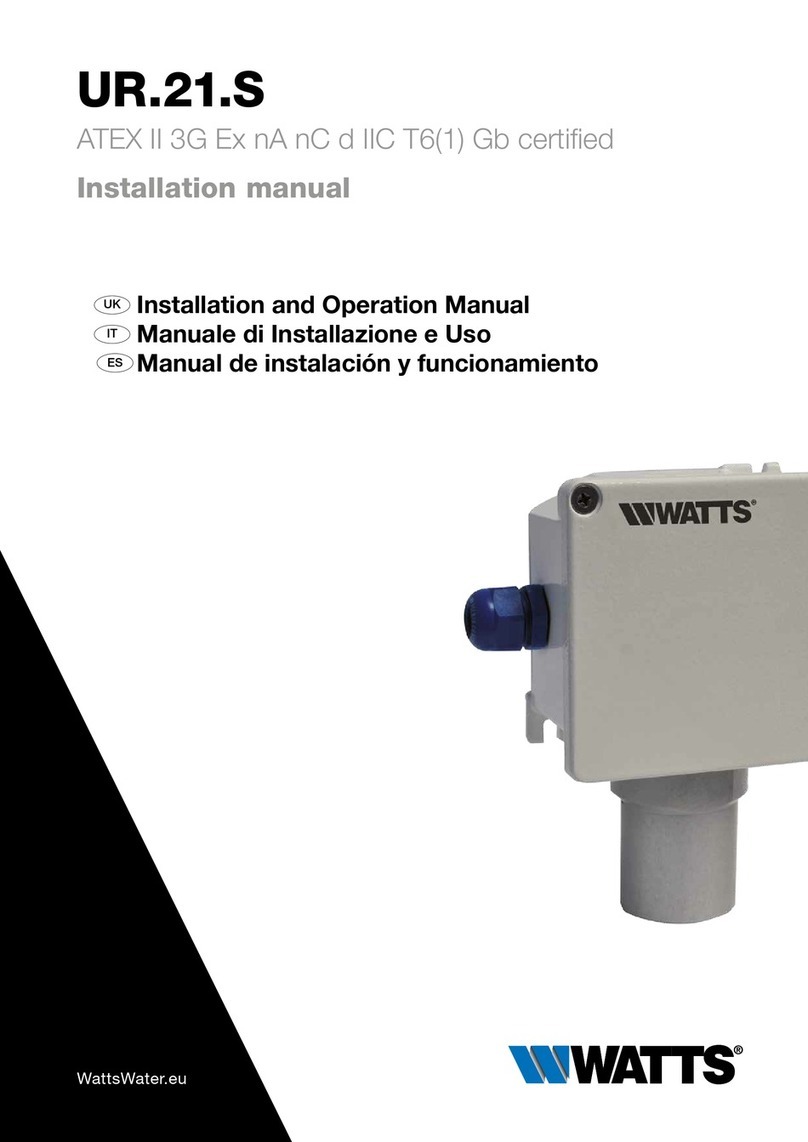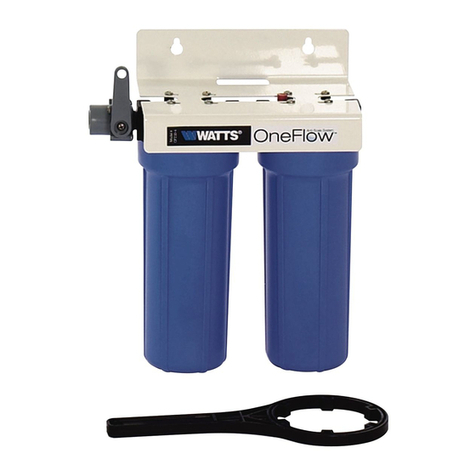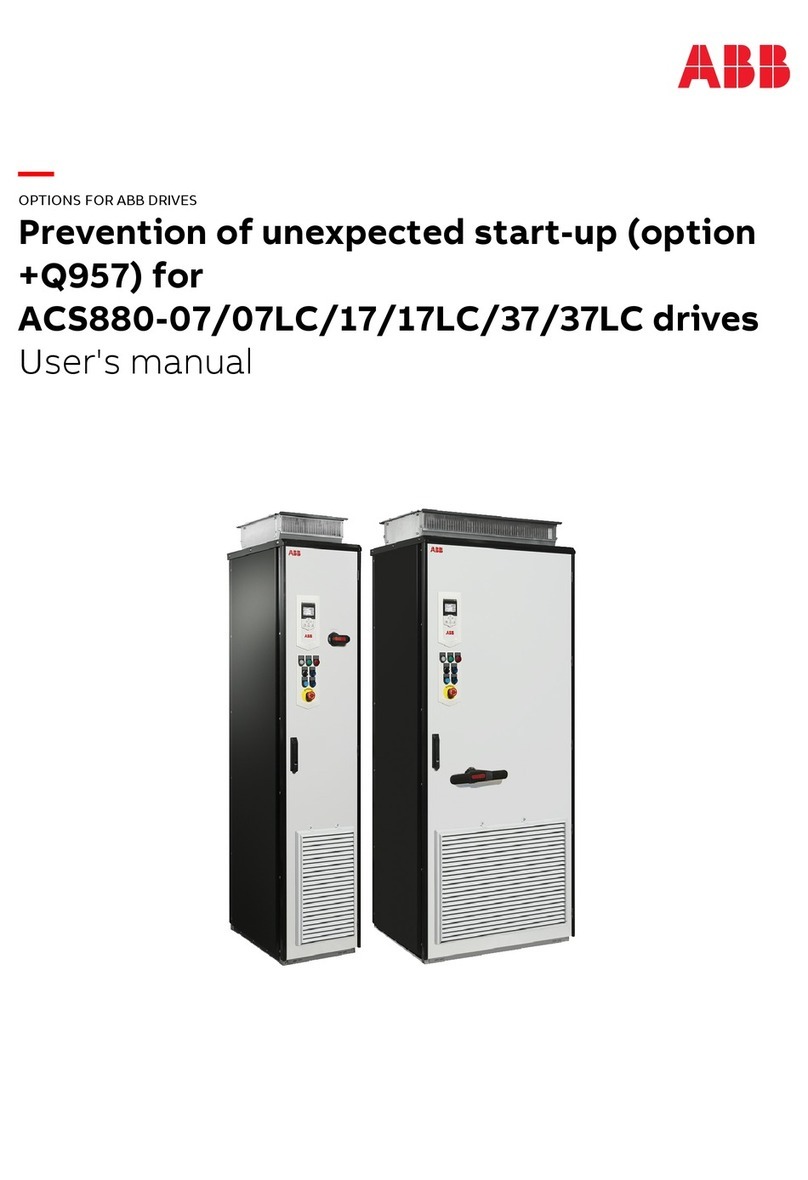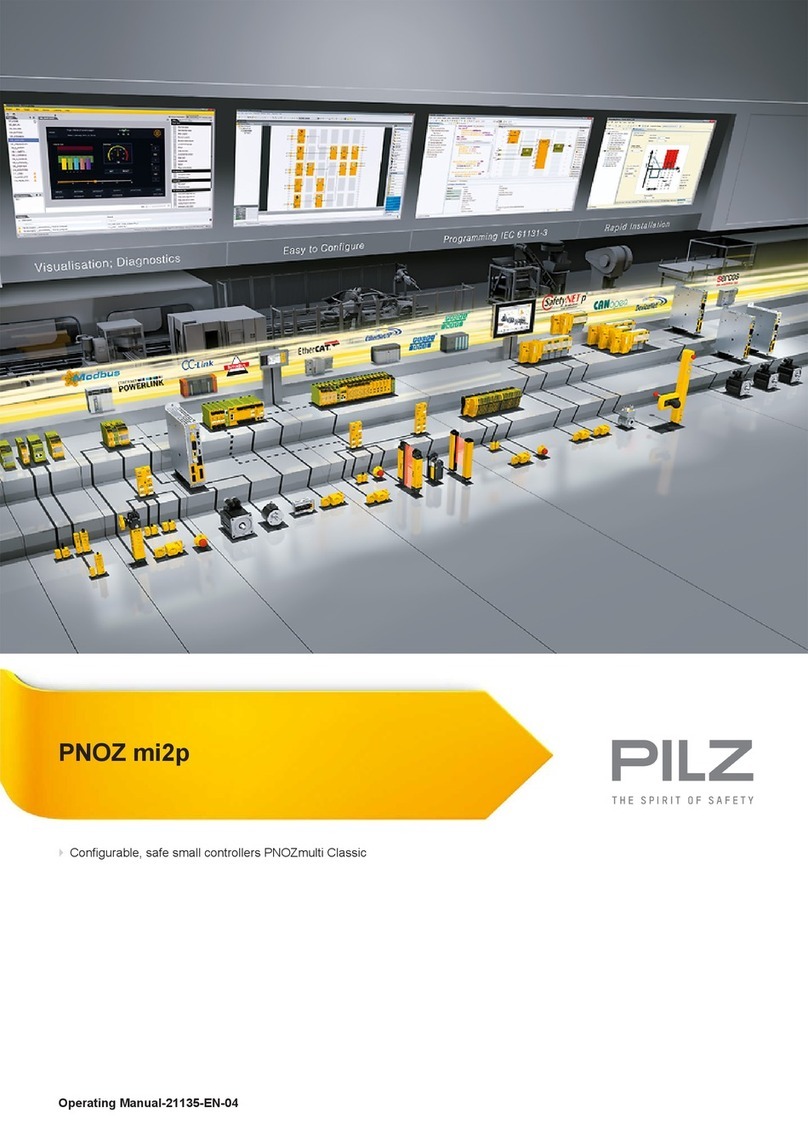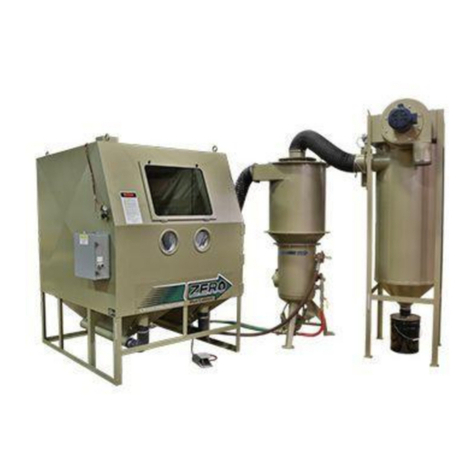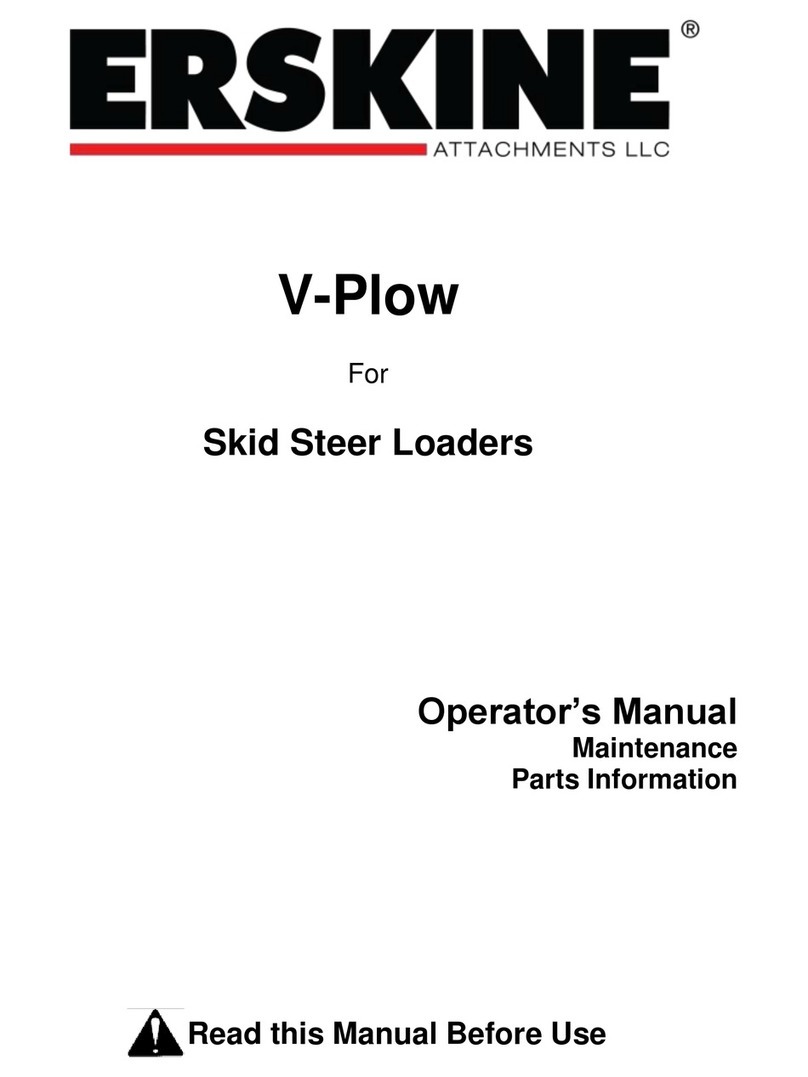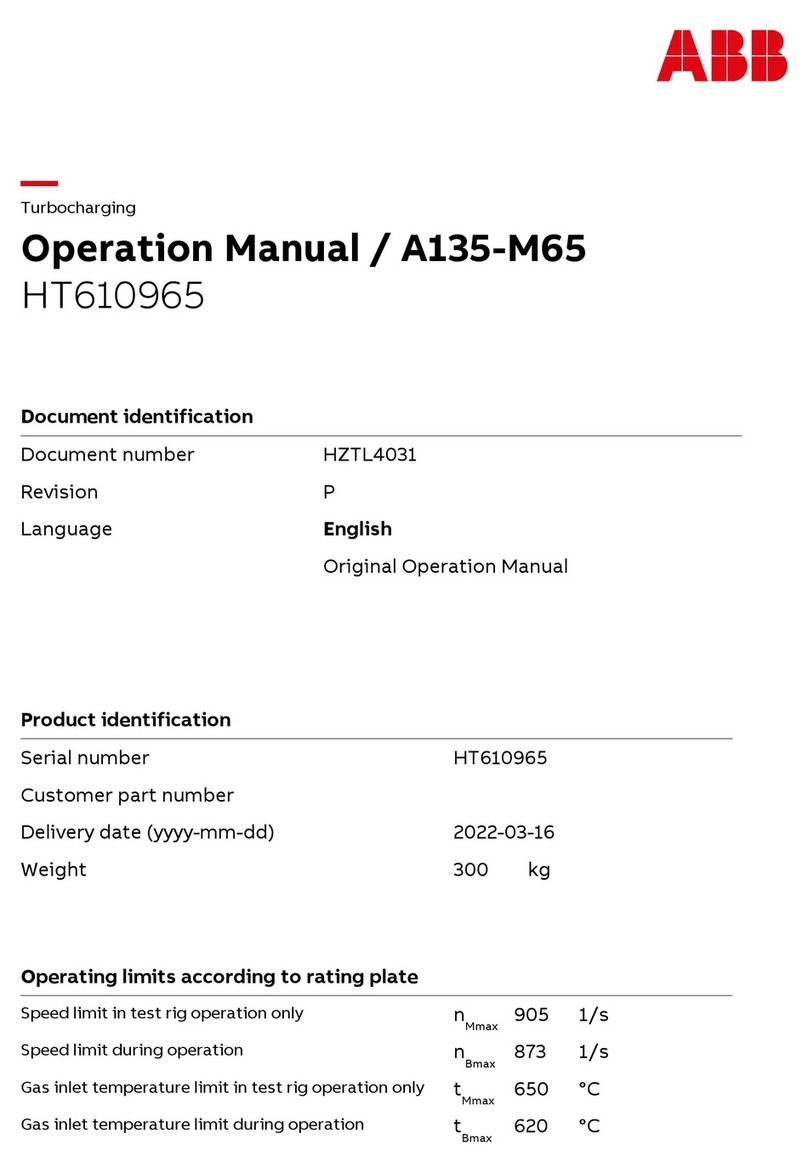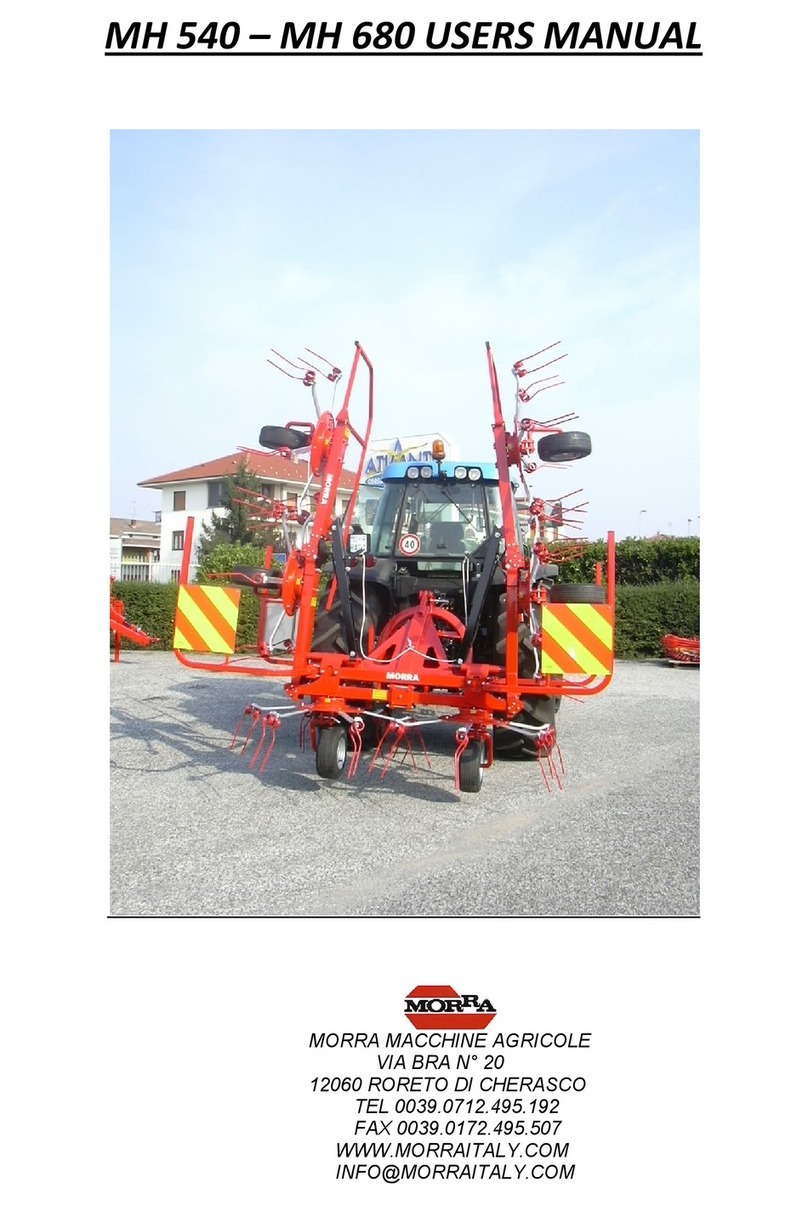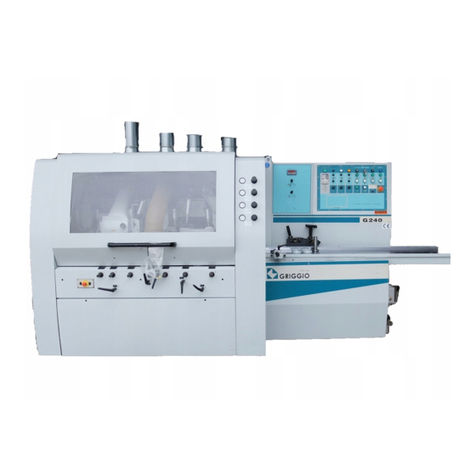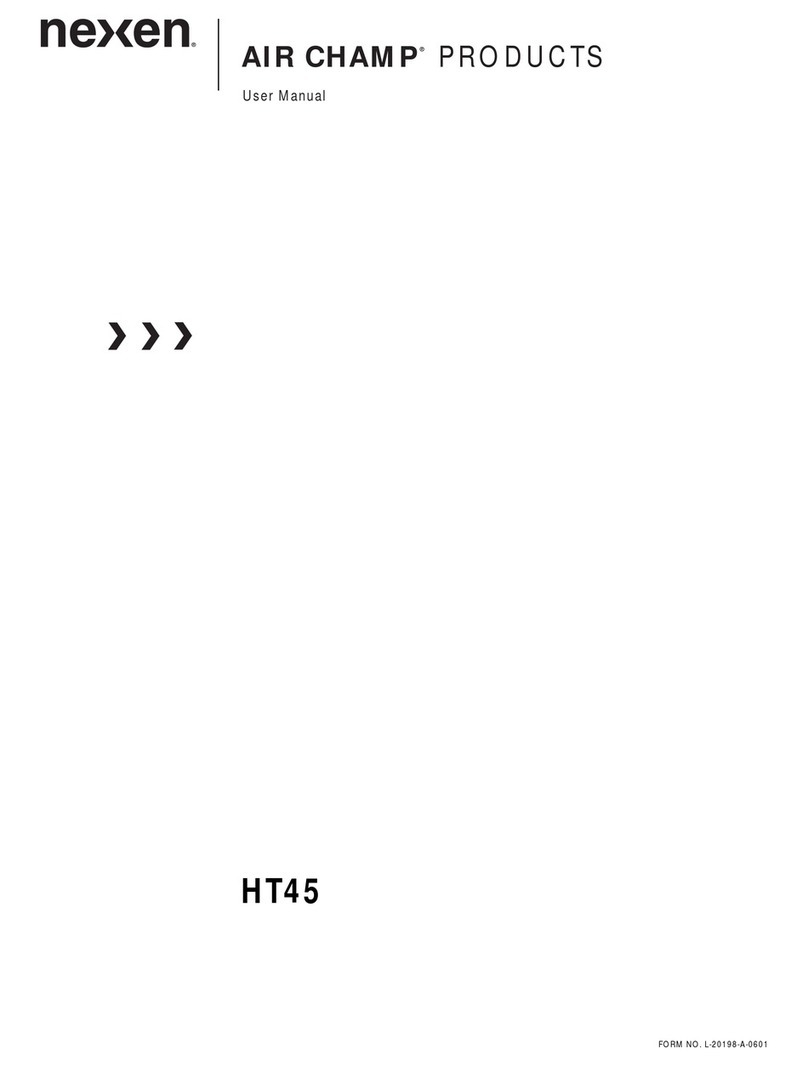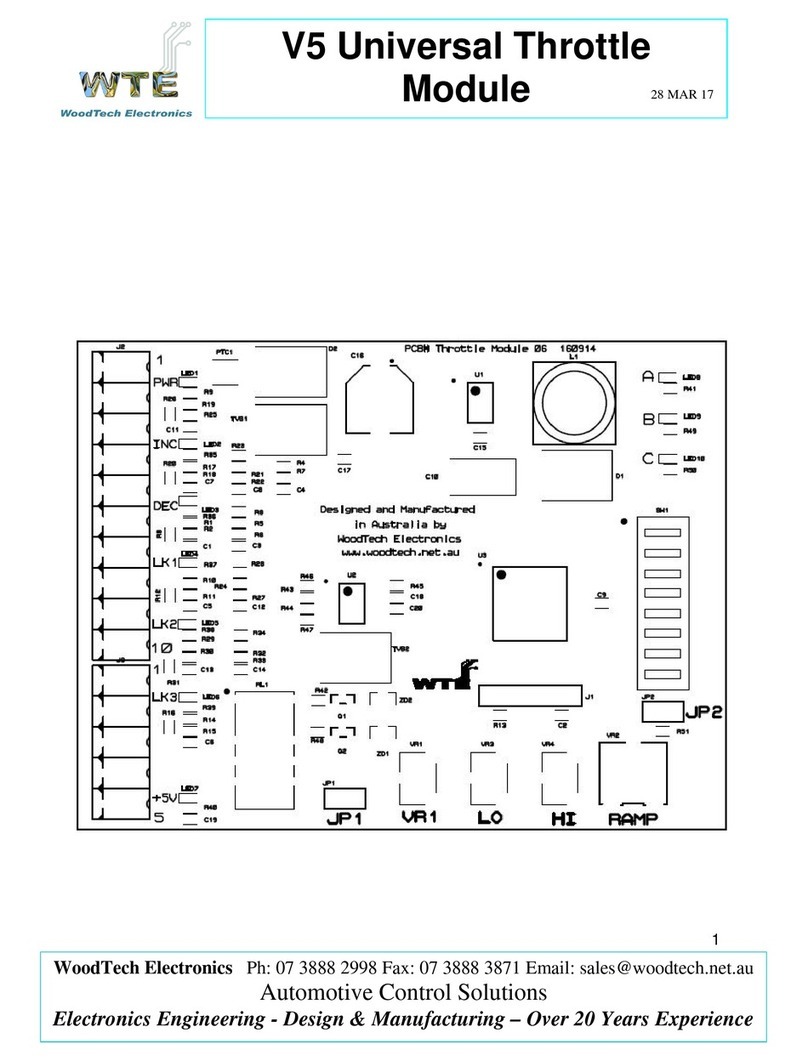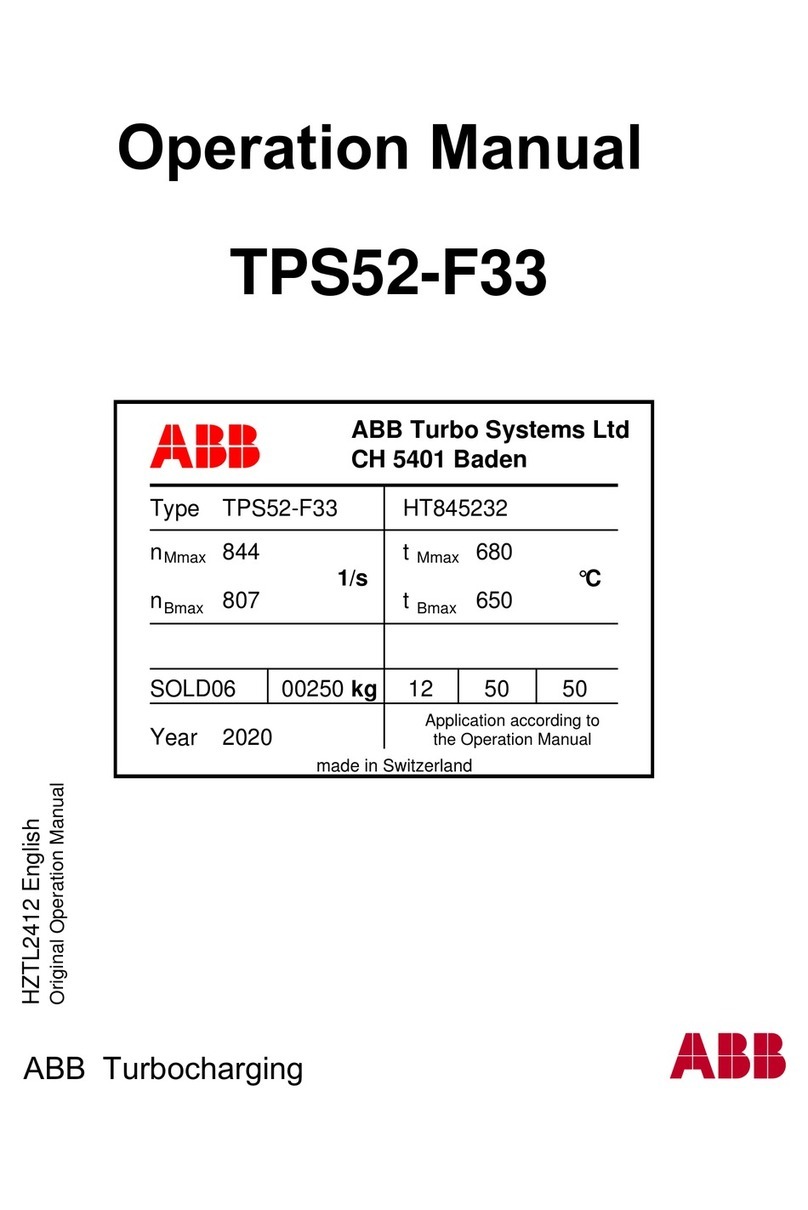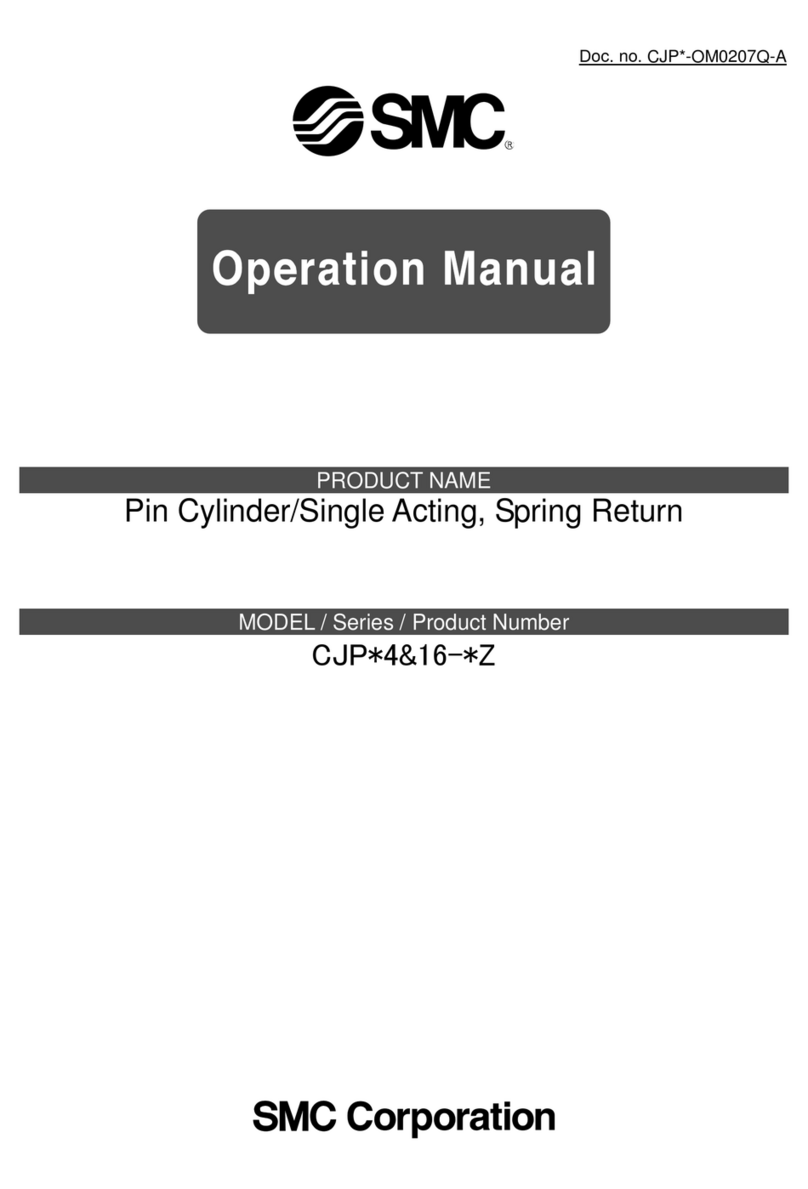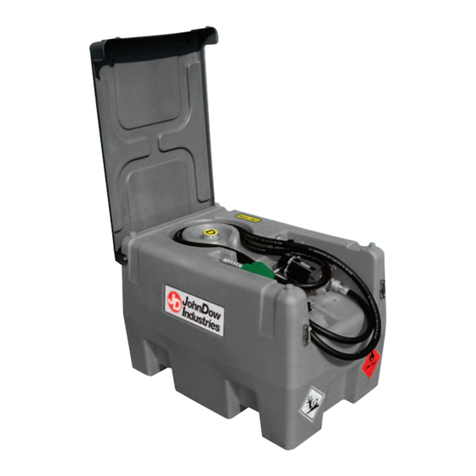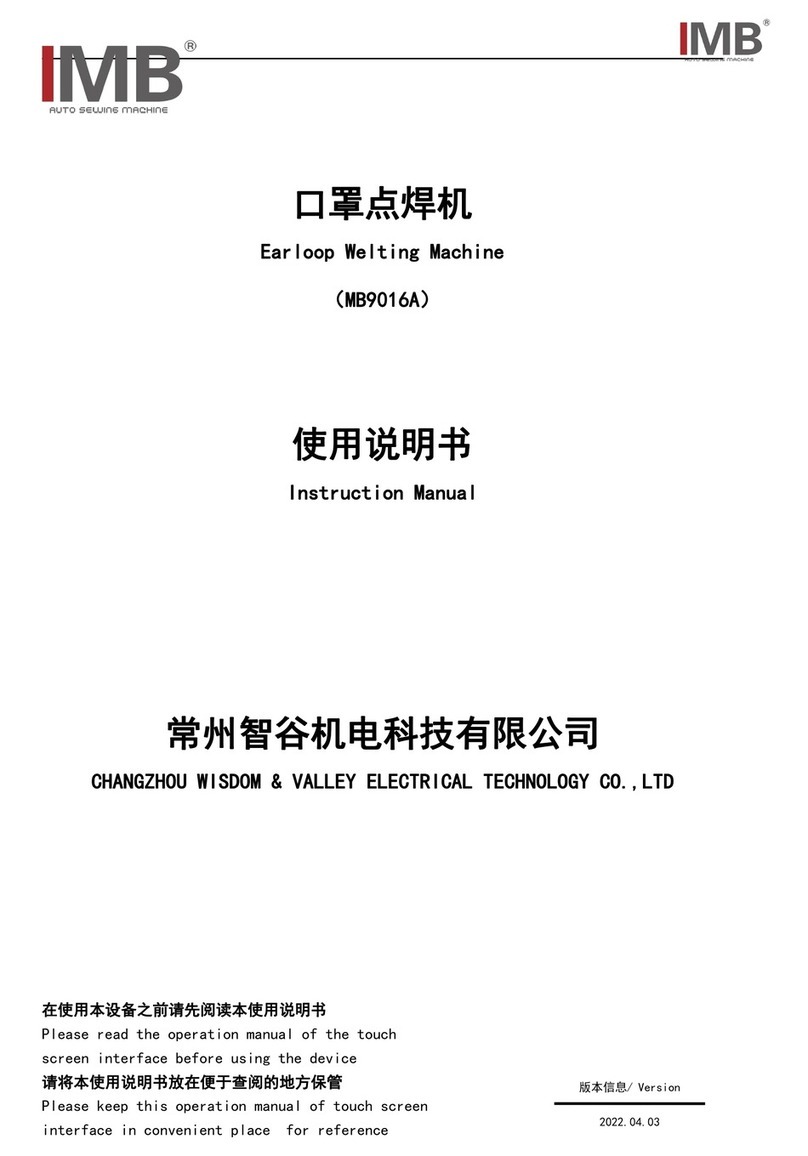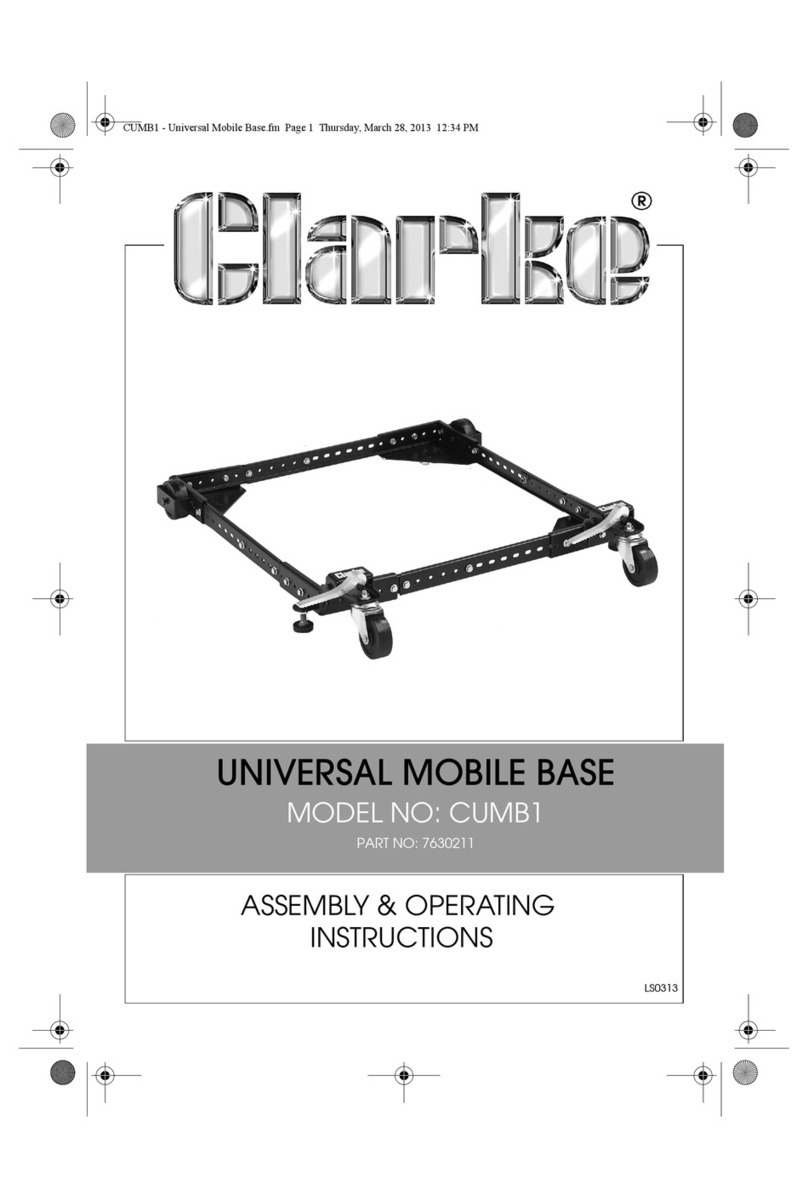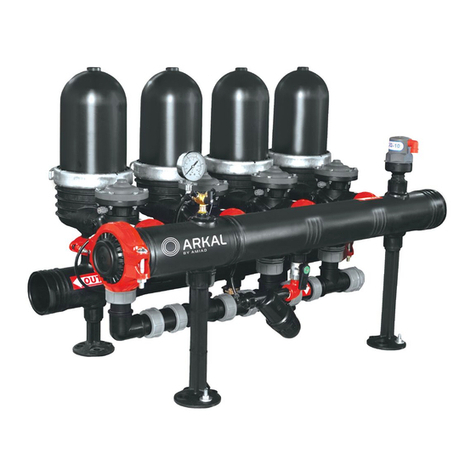
RP/IS-LF909S-FS 2250 0834272 © 2022 Watts
Limited Warranty: Watts (the “Company”) warrants each product to be free from defects in material and workmanship under normal usage for a period of one year from the date of original shipment.
In the event of such defects within the warranty period, the Company will, at its option, replace or recondition the product without charge.
THE WARRANTY SET FORTH HEREIN IS GIVEN EXPRESSLY AND IS THE ONLY WARRANTY GIVEN BY THE COMPANY WITH RESPECT TO THE PRODUCT. THE COMPANY MAKES NO OTHER
WARRANTIES, EXPRESS OR IMPLIED. THE COMPANY HEREBY SPECIFICALLY DISCLAIMS ALL OTHER WARRANTIES, EXPRESS OR IMPLIED, INCLUDING BUT NOT LIMITED TO THE IMPLIED
WARRANTIES OF MERCHANTABILITY AND FITNESS FOR A PARTICULAR PURPOSE.
The remedy described in the first paragraph of this warranty shall constitute the sole and exclusive remedy for breach of warranty, and the Company shall not be responsible for any incidental,
special or consequential damages, including without limitation, lost profits or the cost of repairing or replacing other property which is damaged if this product does not work properly, other costs
resulting from labor charges, delays, vandalism, negligence, fouling caused by foreign material, damage from adverse water conditions, chemical, or any other circumstances over which the Company
has no control. This warranty shall be invalidated by any abuse, misuse, misapplication, improper installation or improper maintenance or alteration of the product.
Some States do not allow limitations on how long an implied warranty lasts, and some States do not allow the exclusion or limitation of incidental or consequential damages. Therefore the above
limitations may not apply to you. This Limited Warranty gives you specific legal rights, and you may have other rights that vary from State to State. You should consult applicable state laws to
determine your rights. SO FAR AS IS CONSISTENT WITH APPLICABLE STATE LAW, ANY IMPLIED WARRANTIES THAT MAY NOT BE DISCLAIMED, INCLUDING THE IMPLIED WARRANTIES OF
MERCHANTABILITY AND FITNESS FOR A PARTICULAR PURPOSE, ARE LIMITED IN DURATION TO ONE YEAR FROM THE DATE OF ORIGINAL SHIPMENT.
Add-on and Retrofit Sensor Connection Kits for Building Management Systems
ORDERING CODE ADD-ON/RETROFIT KIT DESCRIPTION
88003056 FP-BF-BMS-1/2-2
BMS Sensor Connection Kit
Series LF909-FS Small
Sizes ¾" to 2"
Includes sensor activation module with cable, ground wire, and power adapter. Use this kit to
activate the integrated flood sensor and enable flood detection capabilities on the relief valve
of a new installation working with a BMS controller (not included).
88003058 FP-RFK-BF-BMS-CFS-1-11/2
BMS Sensor Retrofit Connection Kit
Series LF909 Small
Sizes ¾" to 1"
Includes flood sensor, sensor activation module with cable, mounting bolts, ground wire, and
power adapter. Use this kit to install the flood sensor and enable flood detection capabilities
on the relief valve of an existing installation working with a BMS controller (not included).
88003059 FP-RFK-BF-BMS-CFS-2
BMS Sensor Retrofit Connection Kit
Series LF909 Small
Sizes 1¼" to 2"
Includes flood sensor, sensor activation module with cable, mounting bolts, ground wire, and
power adapter. Use this kit to install the flood sensor and enable flood detection capabilities
on the relief valve of an existing installation working with a BMS controller (not included).
Add-on and Retrofit Sensor Connection Kits for Cellular Communication
ORDERING CODE ADD-ON/RETROFIT KIT DESCRIPTION
88003060 FP-BF-CFS-1/2-2
Cellular Sensor Connection Kit
Series LF909-FS Small
Sizes ¾" to 2"
Includes sensor activation module with cable, Cellular Gateway with mounting kit, ground
wire, and power adapter. Use this kit to activate the integrated flood sensor and enable flood
detection capabilities on the relief valve of a new installation working with cellular communication
to send alerts by email message, SMS text message, or voice call.
88003062 FP-RFK-BF-CFS-1-11/2
Cellular Sensor Retrofit Connection Kit
Series LF909 Small
Sizes ¾" to 1"
Includes flood sensor, sensor activation module with cable, Cellular Gateway with mounting
kit, mounting bolts, ground wire, and power adapter. Use this kit to install the flood sensor and
enable flood detection capabilities on the relief valve of an existing installation working with cel-
lular communication to send alerts by email message, SMS text message, or voice call.
88003063 FP-RFK-BF-CFS-2
Cellular Sensor Retrofit Connection Kit
Series LF909 Small
Sizes 1¼" to 2"
Includes flood sensor, sensor activation module with cable, Cellular Gateway with mounting
kit, mounting bolts, ground wire, and power adapter. Use this kit to install the flood sensor and
enable flood detection capabilities on the relief valve of an existing installation working with
cellular communication to send alerts by email message, SMS text message, or voice call.
USA: T: (978) 689-6066 • Watts.com
Canada: T: (888) 208-8927 • Watts.ca
Latin America: T: (52) 55-4122-0138 • Watts.com

